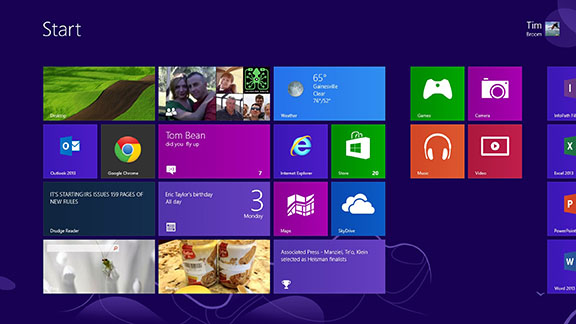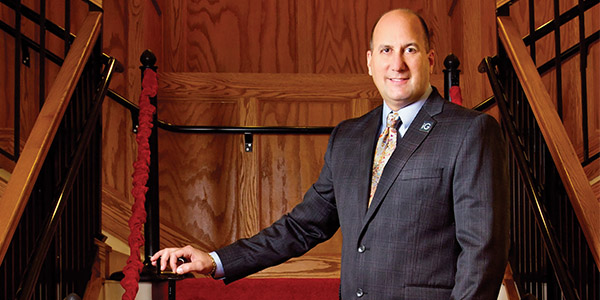Many adults struggle with understanding the deaf—it’s a life many of us cannot even begin to imagine. Nancy Rowe, however, knew in fourth grade that she not only wanted to understand deaf children, but she wanted to teach them.
By the time she was in seventh grade, she was familiarizing herself with sign language, learning to read Braille and reading about how children and adults coped with hearing loss and visual impairments. She reverently followed her childhood passion all the way through college, graduating in 1968 with an undergraduate degree in speech education from New York University. She continued on to earn a master’s in speech and hearing science from Washington University, graduating in 1970 with a double major in deaf education and audiology.
Throughout her early work in aural rehabilitation and even as a classroom teacher for hearing-impaired students, she noticed a reoccurring pattern: children with normal hearing were experiencing difficulties very similar to those of hearing-impaired children. More specifically, she noted auditory processing problems that resulted in poor auditory memory, word confusion and articulation errors. She found that, hearing impaired or not, she could classify children into two types of learners: efficient (independent learners) and inefficient (struggling learners).
After her first child was born, Rowe developed a small private practice, which allowed her to flexibly combine motherhood and work. She began exploring ways to measure and address the problems of struggling learners, with a mission to change the learning process in a way that would allow a theoretical model to meet the individual needs of a variety of patients. Her goal was to develop a model of learning that would enable her to change not just what children knew (skills), but also how they learned (processing).
Rowe traveled the country to learn more about auditory processing from auditory-verbal pioneers, including Doreen Pollack, Helen Beebe and Daniel Ling. She studied how scientist and learning specialist Dr. Frank Belgau used balance to work with struggling learners. More specifically, she observed how occupational therapists used movement and balance to address learning differences, which led to her design of a new approach of the learning process. “I started to see how the vestibular (balance) system held the key to this problem,” she said. “I began to create some exercises that would address hearing and balance in a new and different way with movement multitasking.
“I saw that individually all of the kids could do learn simple skills in isolation,” she said. “But struggling learners were different in a significant way. Although they had the same hearing and balance skills, they could not combine these skills in movement multitasking in the same way as typical learners.”
She expanded her practice to not only hearing-impaired patients, but also to children with auditory processing disorders. She began developing multi-level programs called NeuroNet programs, which require the neural networking of balance, foot movement, hand movement, listening and speaking. Soon after, growth in demand for the programs necessitated that someone run the business—which prompted her son Jonathan to join the company.
“I saw what [my mom] created and saw there was a lot of value in it, and people were clearly benefitting considerably from this program,” he said. “I came in to take her vision for the program of helping kids become more effective learners, and helped her put that into software that could be delivered around the world.”
“Up until that point, it was my little business,” Nancy added. “I was happy to provide information, but I wasn’t ever thinking it was going to become an international learning enrichment program.”
Today, NeuroNet has more than 3,000 users in nine countries, with programs in English and Spanish. “NeuroNet is, by far, the most successful program I have ever used for information processing,” Rowe said. “It’s now the only program that I use.”
To participate in a NeuroNet program, parents and children work with a certified NeuroNet provider who guides them through the process, while parents attend therapy sessions twice a month. Additionally, parents use the software at home to practice the program exercises with their child 20 minutes each day. The program was designed for the NeuroNet therapist to serve as a coach to help the parents implement the program, but without requiring the child to visit the therapist every day.
A child participating in the program uses the interactive NeuroNet software to perform the rhythmic motor patterns and speech patterns while watching a model on the computer screen. The rhythmic exercises engage language and motor skills.
An essential aspect of participating in NeuroNet is the child’s ability to make the speed and accuracy network between language and motor skills. For instance, some children can repeat motor patterns, but lose track of speech patterns, while other children maintain speech patterns, and lose track of motor patterns. NeuroNet gives them the opportunity to practice integrating both, preparing them for the processing demands of motor skills and language skills that appear frequently in school and everyday life.
“Most of the kids who are referred to NeuroNet are struggling learners and our goal is to help them become independent learners,” Rowe said. “It’s not that we magically fix kids who are struggling. The program and all the practice involved is hard work. But in addition to practicing the exercises, our goal is to make the child’s struggle worth the effort, by helping him learn to be able to predict success as he moves through the program levels. The learning job isn’t done until the child not only can be successful with the exercises, but can also predict before he starts that his efforts will be worthwhile.”
With two full-time staff members and seven contractors, NeuroNet is looking to expand its team and the reach of its programs in the upcoming year. In the last year, the company has more than doubled its sales to therapists. NeuroNet programs are also being implemented throughout schools in six states. The company is currently located in the Florida Innovation Hub at UF and is in the process of completing a round of financing to enable further expansion.
“The thing that has been most outstandingly heartwarming in my work is the number of parents who write to me that their child is just happier,” Rowe said. “It’s as if from the inside out the child no longer feels the terrible frustration of struggling unsuccessfully.”


